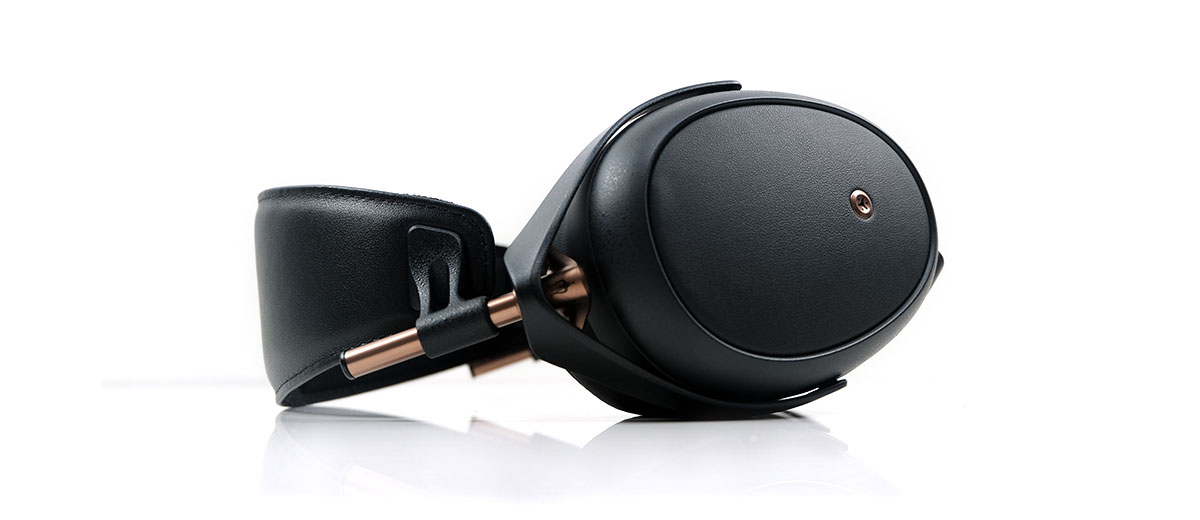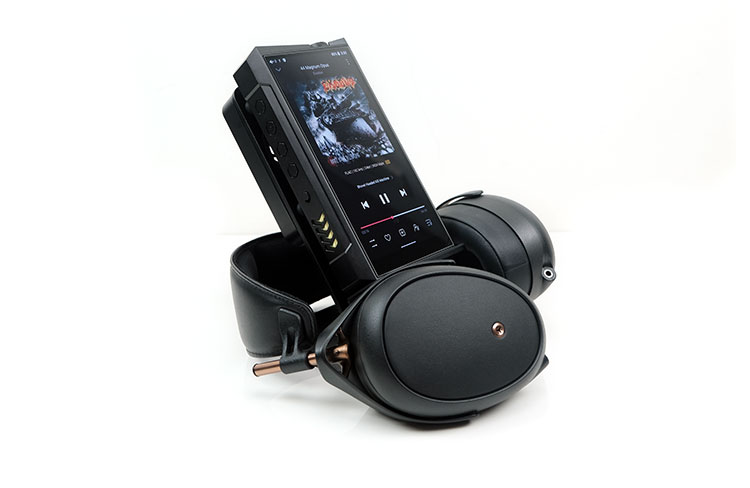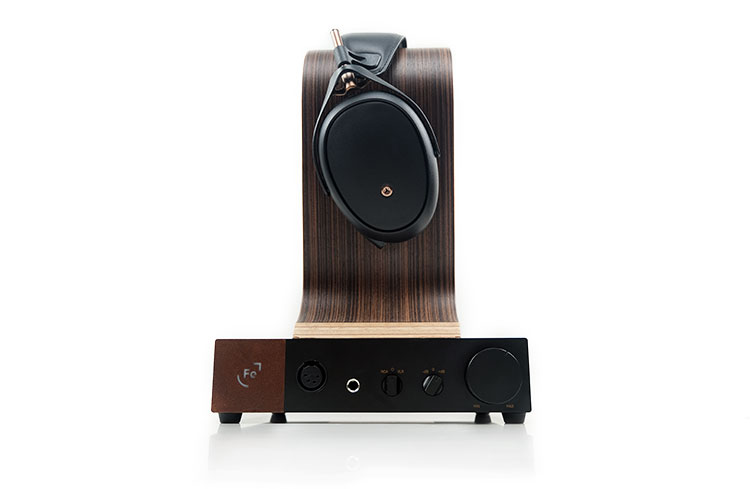Sound Impressions
Summary
The Liric is a joyful little soul, less even-tempered compared to the Empyrean and definitely the Elite but possibly Meze’s most aggressive and ‘fun’ tuning to date.
It may not have the refinement of its bigger siblings, nor its staging headroom. After all, it is a closed-back design so the acoustical environment will have limits. However, there is no denying that Liric’s tuning is more rambunctious and immediate.
If portable was the aim of the Meze for this headphone I think they have the fundamentals for on-the-go listening just right. It is bigger on the bass emphasis, cleaner in the mids, and more sparkling through the highs.
This is a clever mix of energy and bumps in all the right places to elicit a more emotional response from both casual users and audiophiles alike.
I do say audiophiles because, despite the pro ‘pop and rock’ tuning, the Liric’s imaging is excellent for a closed-back headphone of this size. Headphones like the LCD-XC and the Stealth might cast wider or deeper but neither is truly portable for one reason or another.
To retain a high degree of portability and imaging accuracy within a closed-back headphone is still manna for many.
That flexible portability comes from an easy-going SPL of 100dB with an impedance rating of 32Ω not providing any serious roadblocks either.
Whilst it requires just a little more energy compared to the Empyrean in our actual tests, (see page 2 for more detail), the Liric backs up its tuning with a load profile entirely suited to portable sources.
That being said, the most impressive results were from desktop tube amps with smooth-sounding DACs and there is an assumed reason for that which you can read more about just below.
Frequency Response
I would say there is still some homage to the way Meze likes their headphones to be tuned. There is a degree of forwardness in the mids, a good bass response, and nothing overtly analytical.
However, the Liric’s curve is more exaggerated than its top-tier siblings. You get a stronger sub and mid-bass presence and a definite upper treble push with sparkle that ushers in a very different type of midrange timbre as a result.
The Liric’s bass is to the fore with a relatively linear low-shelf or plateau from 20Hz up to around 100Hz that produces a solid fundamental and a bit of warmth also on instruments pitching below 1k.
Where it differs a lot from the Empyrean, for example, is a subsequent sharp dip and rise from 200Hz to 1K to create a stronger bass to mids separation, thinning out some instruments or positioning them a little bit behind vocal imaging to enhance the perceived imaging complexity.
Unsurprisingly, the 1-4k range on the Liric is boosted but not overly so and not as far north as something like the LCD-XC 2021. The vocals have a nice presence, though the weight is a bit more to the neutral and clean side compared to the denser Empyrean sound.
Much of that is comes from the upper treble push from 8-10k bumps the Liric’s upper order harmonics sounding cleaner and harder-edged than their TOTL models. Snares have some bite, natural sibilance can be heard with a splash of sparkle on top.
Source matching, and the quality of the audio playback in terms of mixing, might be the final determiner here for how much of that you hear because it can vary.
Timbre
The Liric timbre is a mix of subtle warmth towards the low end and a bit more brightness beyond 5k. Where in the mids an instrument’s main harmonic order sits will determine how much you hear of either.
One thing is for sure, the bass fundamental on the Liric low-end for instruments is solid and meaty. You get a nice level of PRaT and drive as a consequence though not quite the same density and richness as the Empyrean’s whose curve barely dips from 200Hz up to 1K.
High pitching percussion and synth timbre sound very clean with better presence than the Empyrean’s toned-down treble but they sound a little lighter and harder-edged also.
Clean or bright-sounding sources will tease that out a lot more than smooth-sounding amps and DAPs so it is not cut in stone. You can also PMEQ that 8K marker by a few dB to soften note leading edges.
All of which produces a midrange coloration that has a lot more contrast than its higher-end brothers. You might perceive that as enhanced clarity though the resolution is not quite on par with the Elite or Empyrean.
Rather the tone is neutral in part, becoming slightly warmer on the lower mids and progressively cooler the further your ear travels upwards.
Staging & Dynamics
The Liric is more depth and height than width. However, within that sort of oblong staging presentation, the imaging accuracy and complexity are actually excellent.
Perhaps an ode to Meze in keeping the mids more to the neutral side with that 200Hz cut because it never sounds boomy or overpowered by that sub-to-mid-bass lift.
There is an element of faux detail to it with that lifted upper treble producing a stronger uptick in odd harmonics but that’s fine, I enjoyed the contrast, and the way it lifted some spatial cues presence more to the fore made it more engaging.
Just watch percussion presence as it can come to the fore and pull your ear upwards if there is no supporting bass mix to go with it.
Vocals are to the fore with that 1-4k lift with lower pitching instruments tucked in behind though it’s not as forward or thick sounding as the Empyrean. The Liric does seem to stretch upwards a bit better though not as far out wide.
Synergy
Efficiency
The Liric is rated at 30Ω and 100dB SPL and almost as efficient as the Empyrean which I rated as an easy-to-drive full-sized planar headphone.
The Liric did require just a little more juice compared to the Empyrean on our tested platforms such as the desktop Ferrum OOR (SE or balanced) and the portable LP P6 Pro DAP (balanced). However, you are good to go with properly powered DAPs and portable amps if you want to keep it mobile.
Since the Liric comes with two SE terminated cables chances are you might want to remain that way though I tended to swap them for cables I had with similar connectors such as the HIFIMAN 3.5mm terminated XLR versions with crystalline copper and crystalline silver wiring for desktop use. Keeping it SE will mean going into a high-gain mode for most DAPs.
There are a few DAPs and portable amps with a good 3.5mm TRS output rating such as the Chord Mojo 2 at 600mW, Lotoo PAW Gold Touch at 500mW, and the FiiO M17, also at 500mW on 32Ω loads. All three had no issues driving the Liric to a very satisfactory level.
Going balanced 4.4mm will also bring more power when going portable meaning improved separation, wider stereo imaging, and a superior dynamic range. I could also drop down to medium or low-gain mode for the likes of the M17 and the P6 Pro when going balanced.
Portable Pairings
I tended to prefer a slightly softer and more natural-sounding source for timbre though some of the cleaner more neutral sources did much better in terms of resolution and airiness. Which you prefer comes down to personal preferences.
I have quite a few reference tracks that are somewhat bright in their mixing such as Brother Firetribe’s 2020 Burn album that can show up some sibilance and lean notes quite easily with the wrong pairing.
For example, the M17/Liric combo with this album sounded very powerful, spacious, and clean. However, too clean for those upper mids and treble with the M17 tending to just squeeze out a bit too much of a bright overtone on percussion and synth notes.
For this kind of recording the Lotoo PAW Gold Touch is the preferred reference player with its slightly softer leading edges. The HiBy RS6 is a more cost-friendly alternative offering the most soothing timbral balance for vocals but at the cost of some minute detail. It does much better with emphasized sibilance compared to the M17.
For clarity from the Liric, the Cayin N6ii/R01 is the stronger R2R DAC though vocals are a little thinner sounding compared to the RS6. Still, the bass weight and dynamics from the Liric are much more defined with the Cayin combo, and of the two, it does offer the larger staging quality if that is your preference.
Conversely, if the recordings are a lot warmer and smoother, such as Billie Eilish’s recent Happier Than Ever album, then the M17 and the reference P6 Pro are much better pairings with little sign of that treble sheen but excellent dynamic range and detail.
Desktop Pairings
Either a smooth-sounding DAC or a tube amplifier works really well with the Liric. Even brighter DACs such as the Qutest paired with the Auris Audio HA-2SF sounded rich and impactful.
It might be overkill, but the new Feliks Audio Envy TOTL tube amplifier combined with the Holo Audio Spring DAC 2 took the Liric to an entirely new level compared to DAPs, even in SE mode. I suspect the additional output power can better control the Liric driver.
Both amps have far better control on that little upper treble sheen that proved more challenging to some lower-powered DAPs with brighter mixes.
The Envy in particular created some incredible levels of clarity and dynamic range and despite being more natural-sounding actually delivered a more refined upper mids compared to the Qutest/HA-2SF.
That may well be the fault of the Qutest more than the tube amp since the Qutest does tend to sound feistier on the treble compared to the Holo Spring DAC 2 which is a smooth R2R performer. Either way, the Liric was sensitive to both systems’ quirks and characteristics so home users will find this pairing fairly rewarding.
Solid-state amplifiers such as the OOR/HYPSOS will need a very smooth-sounding DAC to maximize this pairing. I did try a few line-outs from DAPs such as the P6 Pro but never felt at ease with the sharper brighter timbre being produced from the Liric’s treble.
I would stay with the tube amps smoother sound with the Liric pairing over solid-state, all things considered.
Click on page 2 below for sound impressions and pairings
Click on page 3 below for select comparisons






